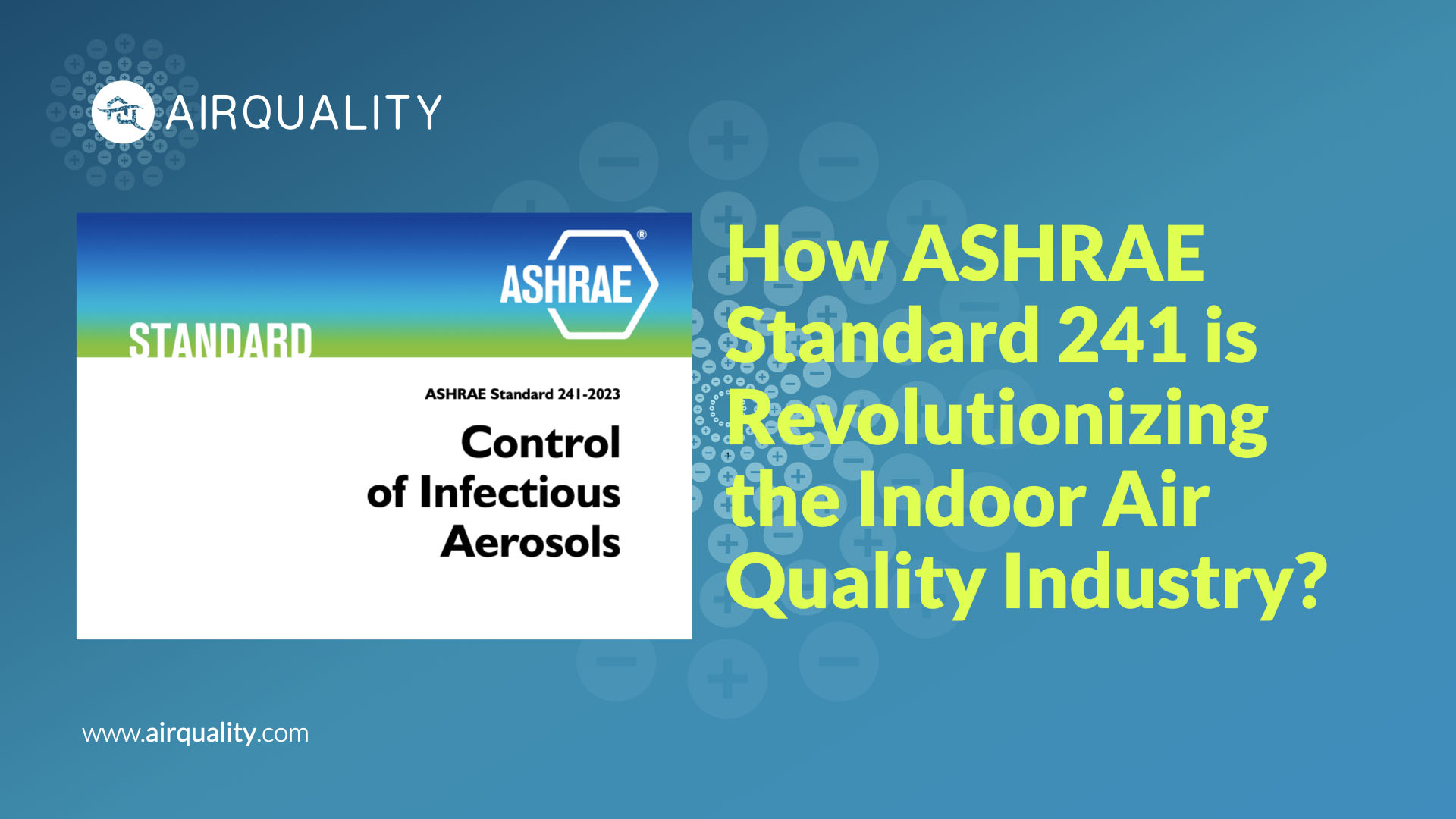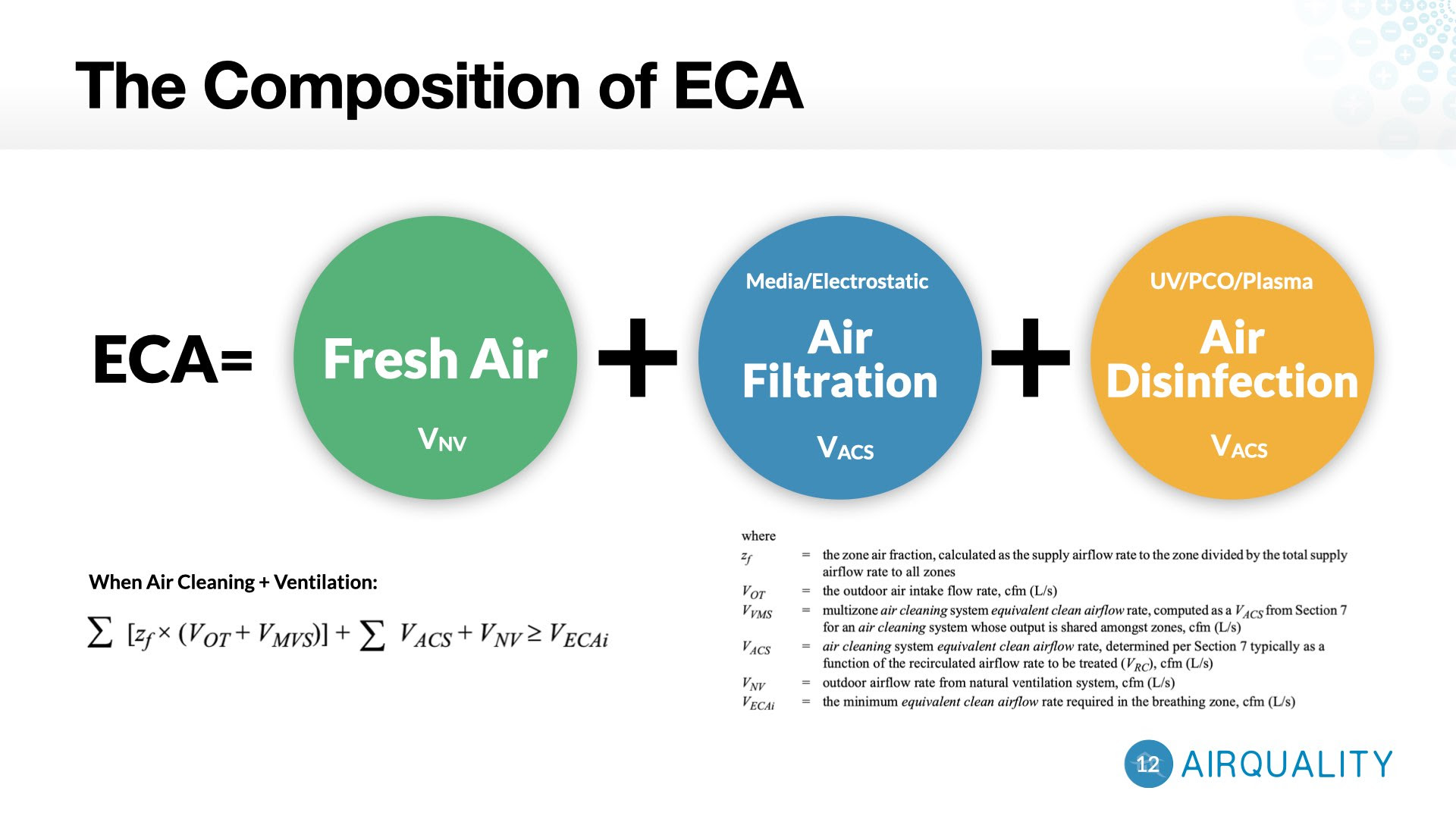 NEWSROOM
NEWSROOM

In June 2023, ASHRAE approved Standard 241, Control of Infectious Aerosols, for publication. The introduction of this standard, "Control of Infectious Aerosols," marks a significant milestone in the ongoing pursuit of healthier indoor environments. This standard establishes a much-needed framework for mitigating airborne disease transmission within buildings.
This standard is not currently mandatory, but with early polling, it appears that adoption will be more widespread and quicker than the committee anticipated with some key organizations.
•Discretion of building owners/operators: They can choose to adopt the standard during periods of high disease risk, like flu season, for improved indoor air quality.
•Potential for future adoption: ASHRAE standard 241 is expected to be in full force in the beginning of 2025. Now some organizations are already showing interest in widespread application.
Looking at the entire standard document, we can find the most important innovations is critical role of equivalent clean airflow (ECA) in reducing the risk of infection. This metric highlights the combined effectiveness of fresh air ventilation, air filtration, and air disinfection technologies in achieving a desired level of air quality. The flow rate of pathogen-free air that is distributed uniformly within the breathing zone. This would have the same effect on infectious aerosol concentration as the sum of actual outdoor airflow, filtered airflow, and inactivation of infectious aerosols. Unlike in standard 62.1/62.2, air cleaning now can play very important role for Infectious Aerosols Control.
Why should such a standard be introduced? I understand it should be related to the global trend of energy conservation and emission reduction. Building energy consumption occupies a big share in the entire human society(20% to 40%, https://www.iea.org/data-and-statistics), and the energy consumption of air conditioning and ventilation systems occupies a huge share (30% to 50%, https://www.energy.gov.au/business/equipment-guides/hvac) in buildings.
Practitioners in the air conditioning industry all know that when the proportion of fresh air in a building increases, the energy consumption of the entire HVAC system will greatly increase. In fact, it is easy to understand, because the system requires more energy to adjust the temperature, humidity, etc. of more external air, turning them into environmental factors suitable for the human body.
Studies suggest that introducing 10% more outdoor air can increase energy consumption by 10% to 30%.
From this perspective, previous standards only considered fresh air as the only factor in controlling Infectious Aerosols, which would inevitably cause a large amount of additional energy consumption in various measures to prepare for or resist infectious disease epidemics. In fact, it is unscientific and unreasonable. We welcome the use of filtered airflow as a component of ECA, which is both effective and provides significant savings in building operating costs.
Requirements for infection risk management are given in terms of equivalent clean airflow rate in units of flow per occupant in a space (ECAi). A brief comparison of the new ECA model table and the previous ACH model shows that in general, most spaces require the overall air volume has been greatly increased, and some spaces have even increased by as much as 10 times. But don't worry, as I said before, the air volume required now is equivalent clean airflow, not just outdoor air. Therefore, for infectious aerosols control, as long as enough air filtration or air disinfection is introduced to exceed the requirements of ECAi, there will be no problem.

Regarding air filtration, a very important point mentioned in the standard is that not all filtered air can be regarded as equivalent clean airflow, and it must meet at least MERV 11 rating. The MERV 8 filter we often used in buildings before can no longer meet this demand. Then only those with a higher level, such as MERV 11 or above, can be considered equivalent clean airflow. But this will bring about a problem. High-rating filters are more expensive, and the operating costs of building HVAC systems will increase. Another very important problem is that common HVAC systems use media filters (such as HEPA). Once Installing a high-rating filter means that the pressure drop will be greatly increased, and the energy consumption of the system will be greatly increased. What is even more fatal is that the fans of some ventilation and air-conditioning systems only consider low-rating filtration. The air pressure of the equipment is not enough, so replace it with a high-rating (high air resistance) filtration products may cause the entire system to not work properly.
UVGI could be one possible solution, but is still not good enough. Some people concern that UV exposure will impact on human, animal and plant’s health. Other reason like, UV light need to be replaced that bring more long term cost, and it only disinfect but can not deal with particles in the air (which is most common pollutants we need to remove). Some technicians will suggest to use ESP (electrostatic precipitators) which can remove the particulate matters with very low air resistance, but it will cause the concern of both factors, size of the unit and of ozone or other byproducts emission. Do we have any other choice?
MESP®, stands for micro electrostatic precipitation, a state-of-the-art electronic air purification technology, that utilizes strong electric fields generated and carried by unique dielectric materials to purify the air. MESP IAQ products stand out for their efficiency, washable filter, slim design, energy-saving capabilities, and the ability to simultaneously eliminate particulate matters and disinfect pathogens from indoor air.

•MERV 14/F8 filtration: This meets the standard's recommendations for high-efficiency filtration.
•Virus/bacteria elimination: As independently verified, this directly addresses a core objective
of ASHRAE Standard 241 - reducing the risk of infection from airborne pathogens.
•Washable filter: This aligns with the standard's emphasis on sustainable solutions.
•Low pressure drop: This contributes to maintaining the energy efficiency of the HVAC system.
•Ozone free: Standard 241 discourages the use of air filtration methods that generate harmful
byproducts like ozone and they reference safety standards like UL 2998 for ozone emissions from
air cleaners.
If you want to request more info, please don’t hesitate to contact your sales representative in AQT, or directly send e-mail with your query to partner@airquality.com. More info can also be found on our website: en.airquality.com

© 2023 AirQuality Technology. All rights Reserved.